Object Identification
Note to students: The best preparation for taking the reading quiz is to pay close attention to the key terms as you read. Each question in the question banks is directly linked to these key terms and phrases.
Chapter Focus Question:
How do the structures of the eye work together with the human brain to create the process of object identification?
- First stage object identification
- Second stage object identification
- Third stage object identification
- Color perception
- Visible light
- Photoreceptors
- Reflected wavelengths
- Wavelength/color
Section Focus Question:
Why is color perception important to humans, and what role does the wavelength of light play in determining what we see?
Key Terms:
In addition to localizing objects, it is adaptive for perceivers to be able to identify objects as well. Threatening objects will lead to much different behaviors than edible objects, potential mates, and places of safety. Object identification is accomplished through several stages of processing. In the first stage, features of the scene such as color, orientation, and depth are processed by separate areas in the brain. In the second stage, the proximal image is organized using Gestalt grouping principles. In the third stage, whole objects are processed and identified.
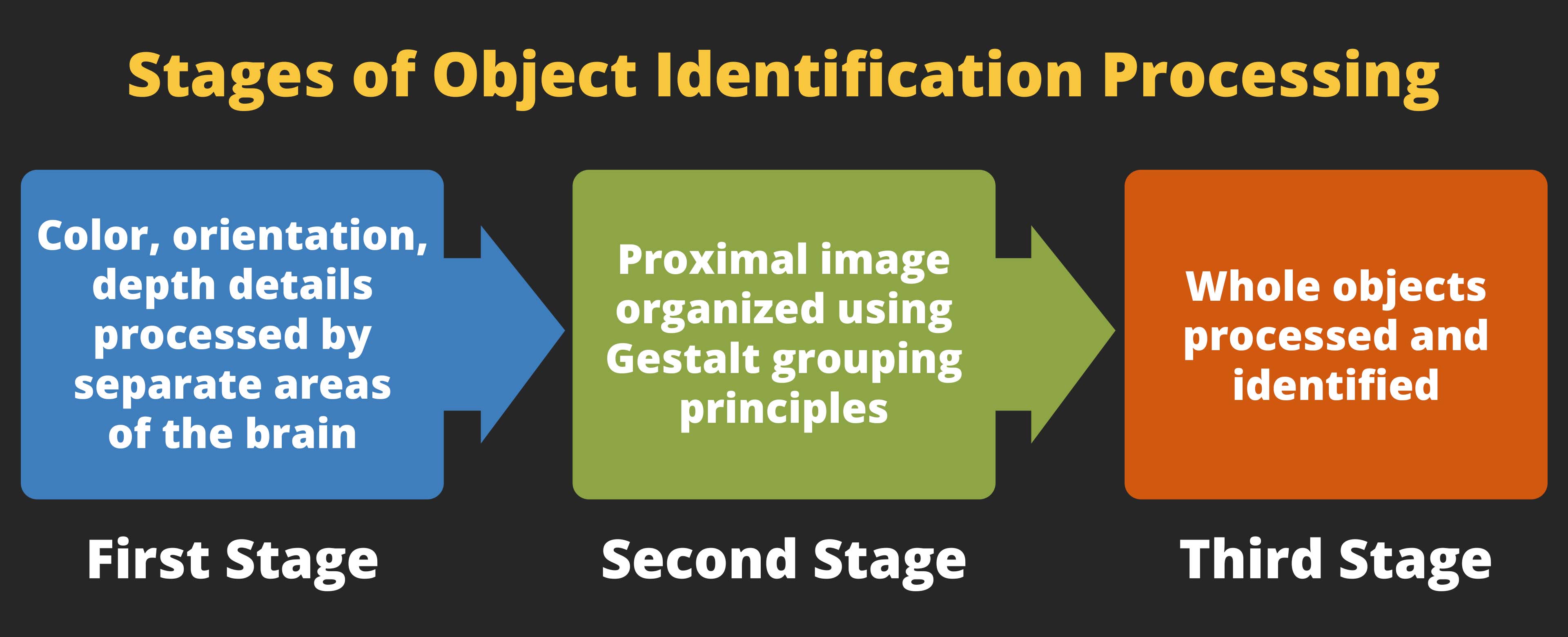
Color Perception
A critical part of early visual processing is the perception of individual features such as color, form, and orientation. Color perception is a unique part of the visual system because our perceptual experience of color is due to processing in the brain and not to the colors of the objects. The objects themselves are not actually colored. Instead, the perceived color of the objects depends on which wavelengths are absorbed and which are reflected.
Wavelengths refer to the distance that a wave of light travels upon completing a full cycle. Visible light is light that has a wavelength between 400 and 700 nanometers. Natural light contains wavelengths across the visible spectrum. For a given object, some of these wavelengths will be absorbed by the object while the other wavelengths will reflect off the object. The reflected wavelengths enter into the eye and cause firing in the photoreceptors that are sensitive to those particular wavelengths. The firing patterns of the photoreceptors and the subsequent processing of these signals in the brain is what gives rise to the experience of seeing color.
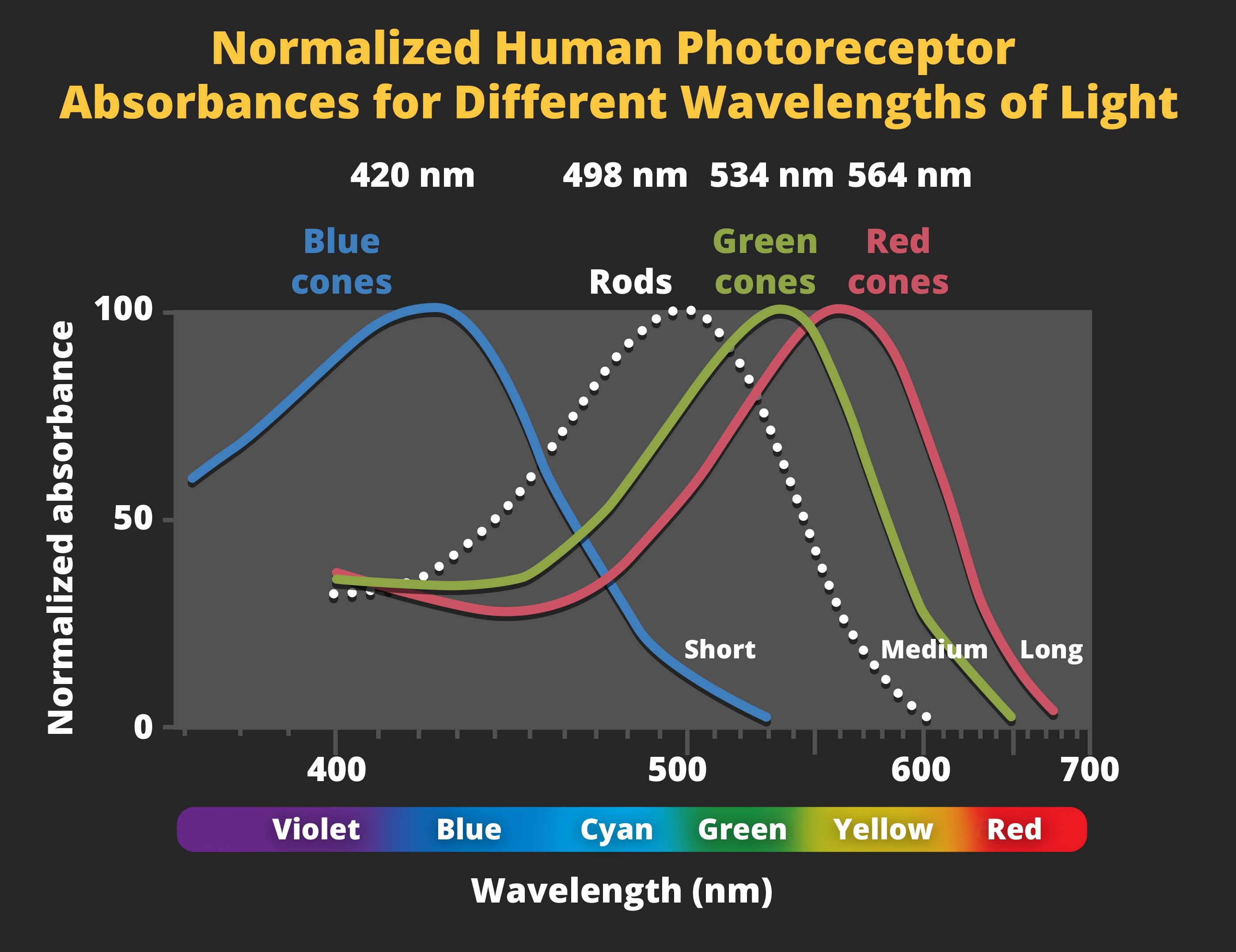
- Rods and cones
- Primary colors
- Ganglion cells
- How rods and cones function
- Approximate number of rods and cones
- Color pairings
- Color afterimages
- Perception of objects in photographs
- Adaptive color perception
Section Focus Question:
What critical role do the retina’s rods and cones play in our perception of color?
Key Terms:
The photoreceptors that allow people to see in color are known as cones. There are three types of cones, and each type is most sensitive to a different wavelength. The cones that are most sensitive to shorter wavelengths are called S-cones or blue cones because short wavelengths correspond to the perceptual experience of blue. The cones that are most sensitive to longer wavelengths are called L-cones or red cones because longer wavelengths lead to the perceptual experience of red. The cones most sensitive to medium wavelengths are called M-cones or green cones. When mixing colors such as food dyes, the three primary colors are red, blue, and yellow, but when mixing wavelengths, the three primary colors are red, blue, and green. This process of mixing colors is analogous to what the visual system does to see color. It mixes the signals from the different types of cones, and that leads to the perception of color.
The neural components of the eye are the five layers of neurons contained in the retina. The neurons in the first layer are the photoreceptors. The neurons that comprise the last layer are called ganglion cells. The three types of cone photoreceptors send signals to two types of ganglion cells. One type of ganglion cells responds to the relative proportion of red versus green, and the other type of ganglion cell responds to the relative proportion of blue versus yellow.
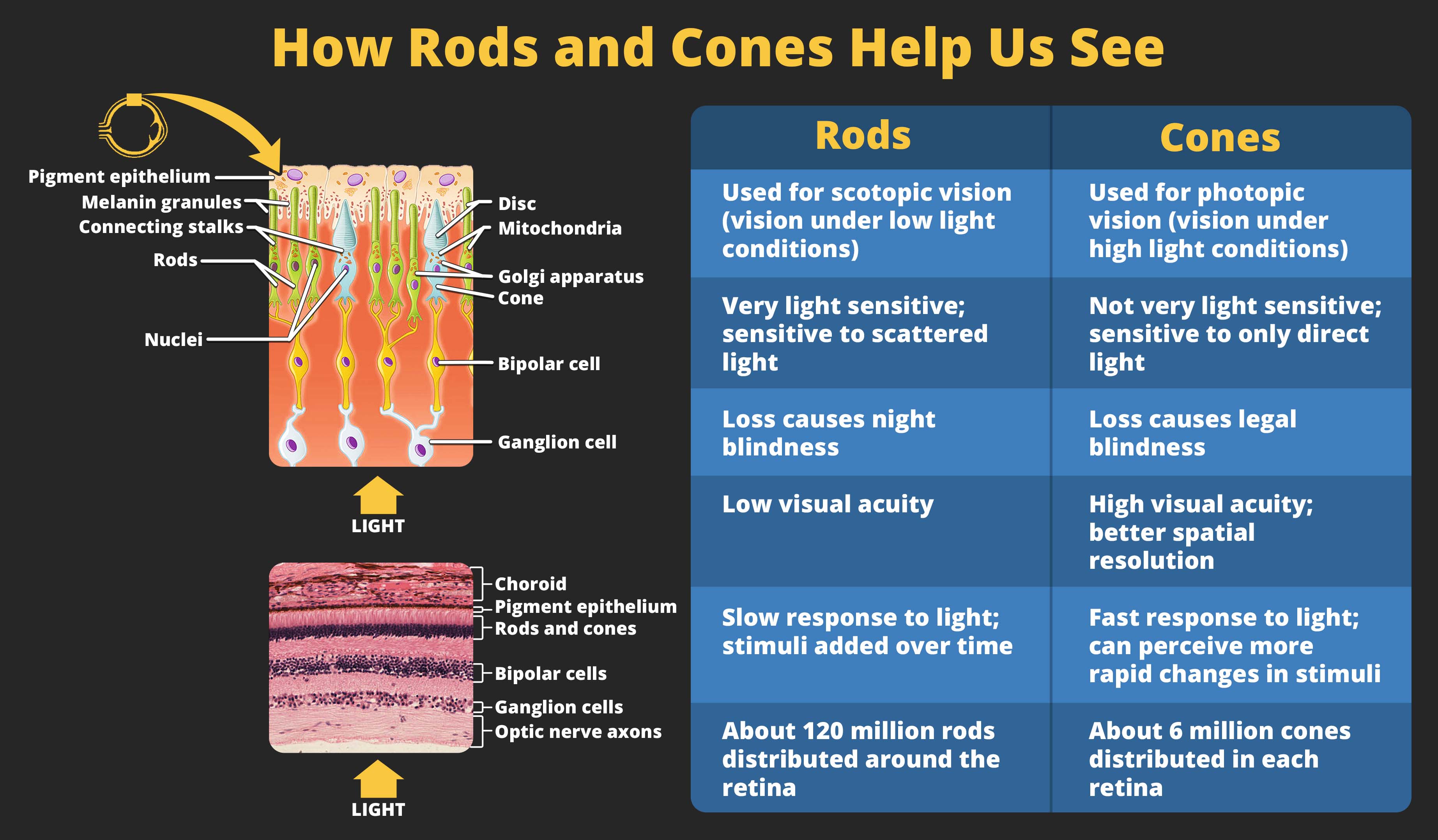
The fact that red and green are paired together and blue and yellow are paired together leads to some interesting phenomena. First, certain color pairings can be perceived, but other color pairings cannot be perceived. You can imagine a bluish green or a reddish blue, but not a reddish green or a bluish yellow. Second, color afterimages lead to striking and predictable experiences. Stare at the center white circle in and count to 30. Then look at the black circle on the right. Did you see colors even though the square was white? These experiences of color are known as color afterimages and are due to the pairings of colors in the ganglion cells. After looking at red, white appears green, and after looking at yellow, white appears blue (and vice versa).
Color perception is adaptive for a variety of functions. Perceiving color helps us detect nutrition in foods such as whether they are ripe, rotten, or not yet ready to be eaten. Perceiving colors is useful for detecting danger such as poisons in plants and animals. The perception of color is also useful in finding a mate. Many male birds such as the peacock use bright colors to help attract a partner. Color can also be used to help organize the visual scene in order to perceive discrete objects. This process requires Gestalt principles of organization.
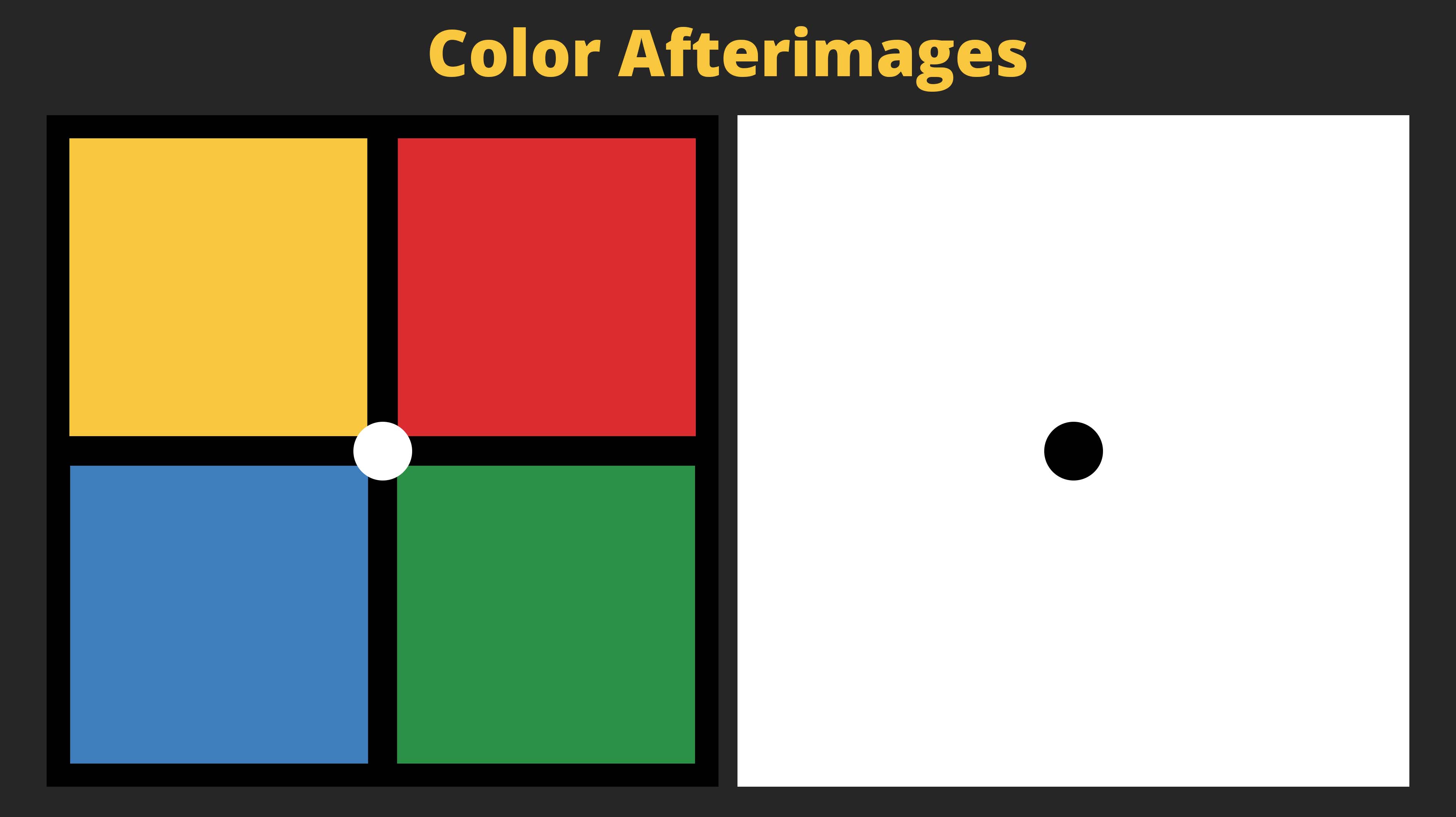
Gestalt Principles of Organization
- Gestalt principles of organization
- Principle of Good Continuation
- Law of Good Gestalt
- Law of Pragnanz
- Minimum Principle
- Figure-Ground
- Kanizsa Triangle Illusion
- Margaret Thatcher Illusion
- Holistic processing
- Fusiform face area
Section Focus Question:
What are the principles scientists use to explain how the brain analyzes visual information, and why are these principles critical to our understanding of perception?
Key Terms:
When we view an image such as the one of the person biking below, we cannot help but see the image as containing individual objects that we can easily identify. But the ease with which we accomplish this feat masks the difficulty of this task. To better understand the complexities of this task, consider that the bottom-right proximal image looks like the image of a star. The proximal image is an array of intensities (represented as numbers), which are based on the firing rate of the individual neurons at each location. In understanding the proximal stimulus in this way, it becomes easier to appreciate the challenge of organizing the proximal image into individual objects.
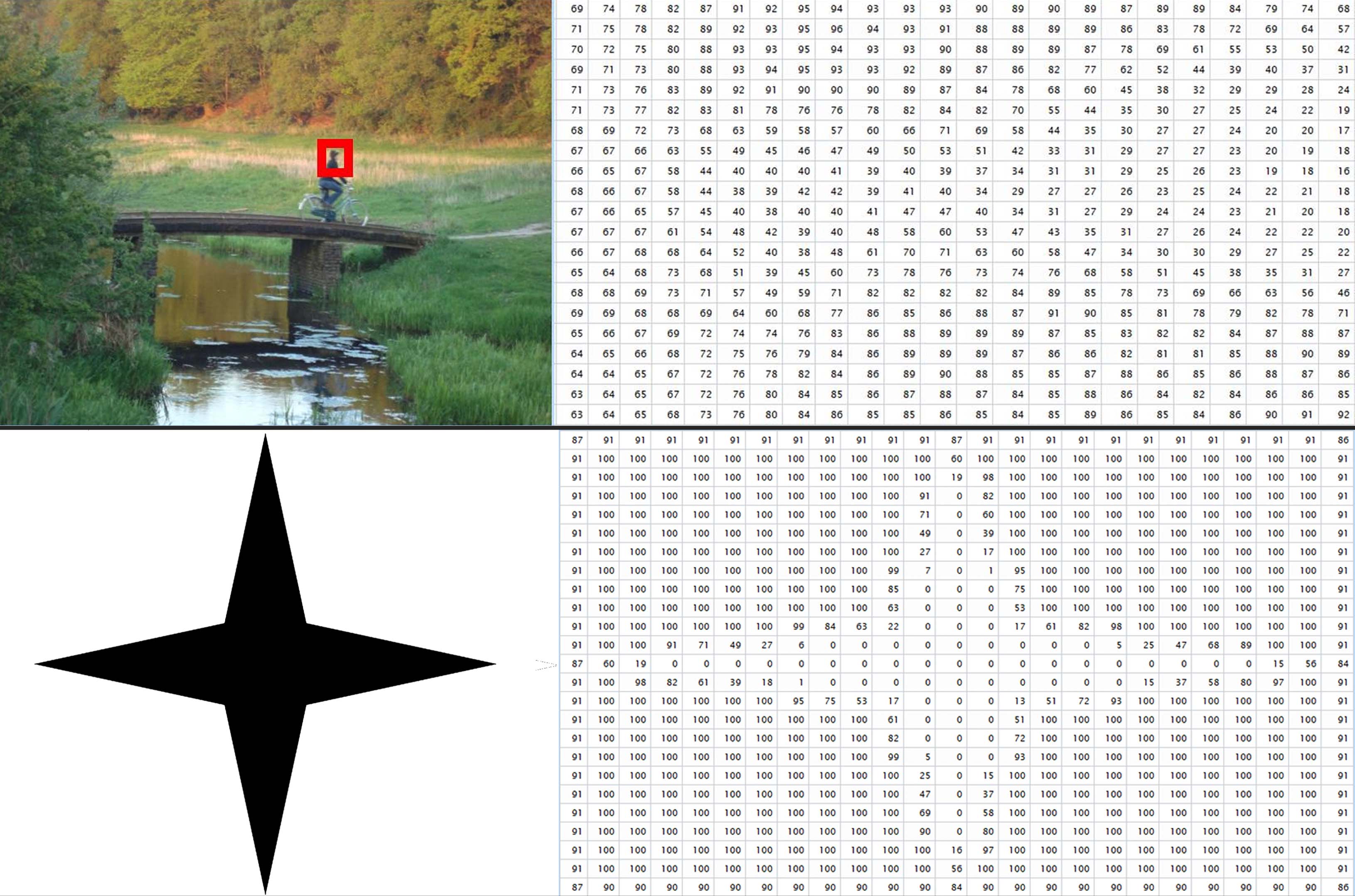
The visual system uses Gestalt principles of organization to establish individual objects within a scene. One principle, grouping by similarity, combines together objects that are similar to each other. The ambiguity of the organization of an array as to whether it should be grouped as rows or columns (or any other combination) can be resolved by grouping by similarity. Similarity can refer to the objects’ colors, shapes, depth, orientation, or motion. However, when grouping is organized by the objects’ motion, it is instead called grouping by common fate. Another principle is grouping by proximity. Objects that are closer together get grouped together.
Gestalt principles can work together. Take the classic Kanizsa Triangle Illusion. Although there is no triangle, people typically see a white triangle placed atop three black circles. This illusion involves three Gestalt principles. One is good continuation, which is that objects that have good continuation are grouped together. We see lines AD and BC even though it is possible that the two lines were AB and CD. Returning to the Kanizsa triangle, the edges of the wedges in the circles are aligned, which leads to good continuation.
In this case, it allows for the possibility that a single object occludes part of each circle. When the circles are rotated to disrupt good continuation, the illusory triangle disappears. The second principle is Law of Good Gestalt (also known as the Law of Pragnanz or the Minimum Principle). According to this principle, perceivers see the simplest, most regular figure possible. As an example, circles are more regular and simple than the pacman-like images, so if the scene can be interpreted as circles that are occluded rather than pacmen, the visual system prefers to see circles.
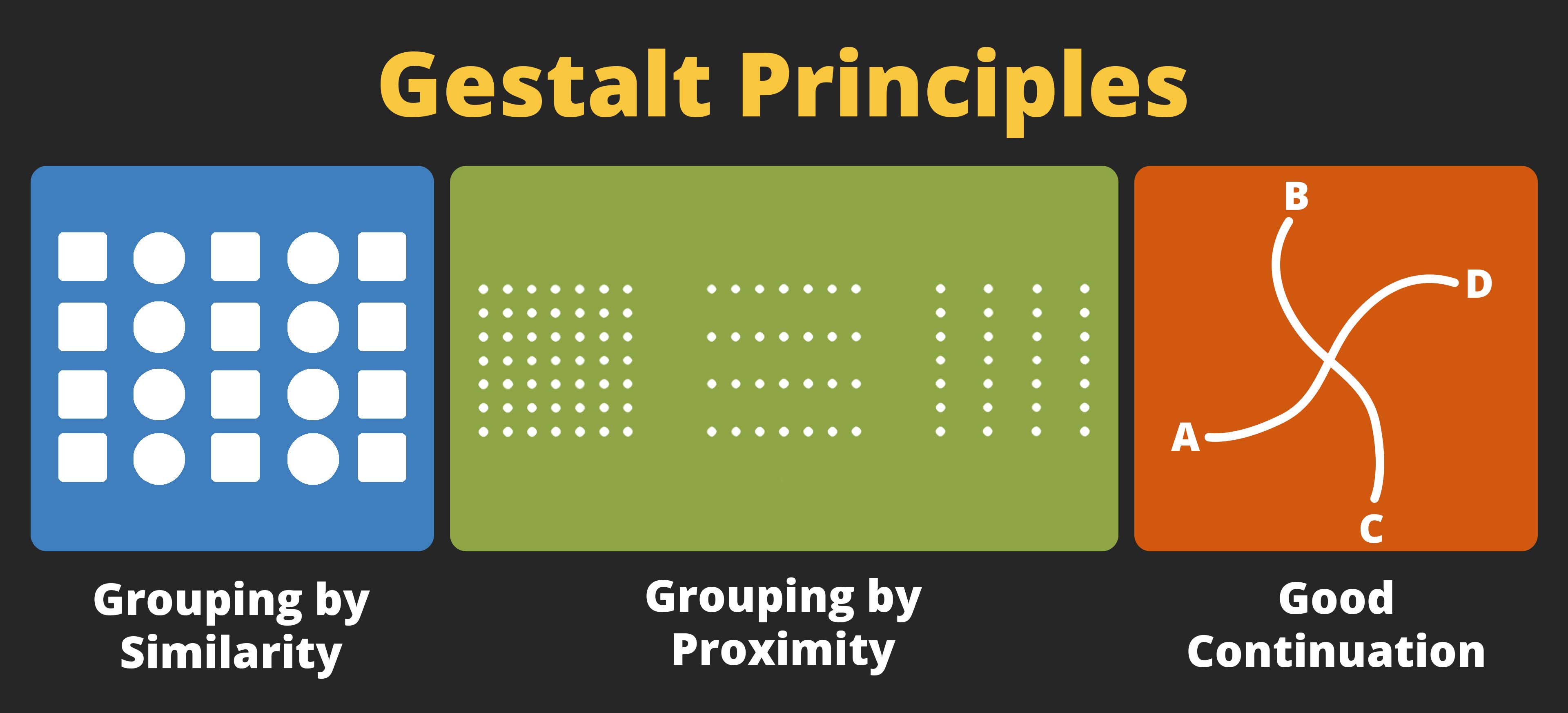
The third principle is Figure-Ground. According to this principle, when an edge is detected, the visual system must assign one side of the edge to be figure and another side of the edge to be ground. The side assigned as figure is seen to be closer to the perceiver and is seen to occlude the rest of the ground. In the edge of one of the ‘mouths’ of the pacmen, the black part (the pacman) is assigned as ground to the white part (the triangle), which is assigned to figure. Thus, we see a triangle occluding a circle. The reason we see a triangle, and not another shape such as a star, is because of the Law of Good Gestalt: the triangle is the simplest shape that can be interpreted given the scene. In other cases, the interpretation of the triangle is not possible, and we see the star instead.
The Gestalt principles of organization allow the visual system to segment and process a scene. The principles take into account not only the individual parts but also the relations among them. A key phrase among Gestalt psychologists is that “the whole is other than the sum of its parts.” In other words, the whole object that is experienced is different than the experience of the individual parts that comprise the object. This idea can be exemplified in the perception of faces.
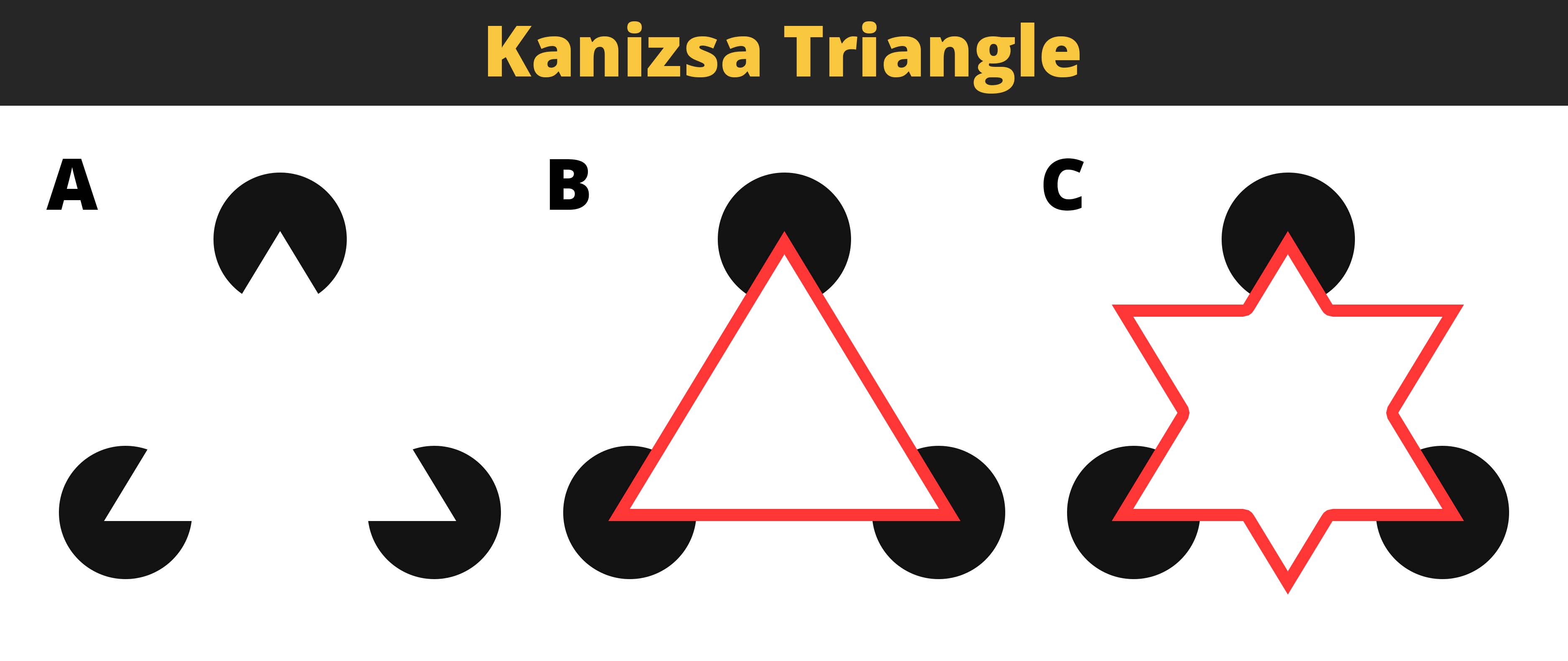
Face Perception
Face perception is critical for social species such as humans because it is necessary to be able to identify individual people. Visual processing of faces has several unique features compared to processing of other kinds of objects. Faces are processed holistically. This means that the face is processed as a whole, rather than as individual features. The difference in processing that is holistic versus processing that is built up from individual features can be appreciated with the Margaret Thatcher illusion. When the faces are upside down, the visual system does not treat them as faces but rather as objects, so the processing is done by combining features. Upside down, you can tell that the two faces are different but neither seems particularly upsetting. This is because the individual features of the faces are all intact and only the arrangement of the features is askew. Now look at the same faces right-side up. In this case, the faces are processed holistically and the difference between the faces is quite obvious. Even though the features are intact, the error in their arrangement is noticed immediately because of the holistic processing.
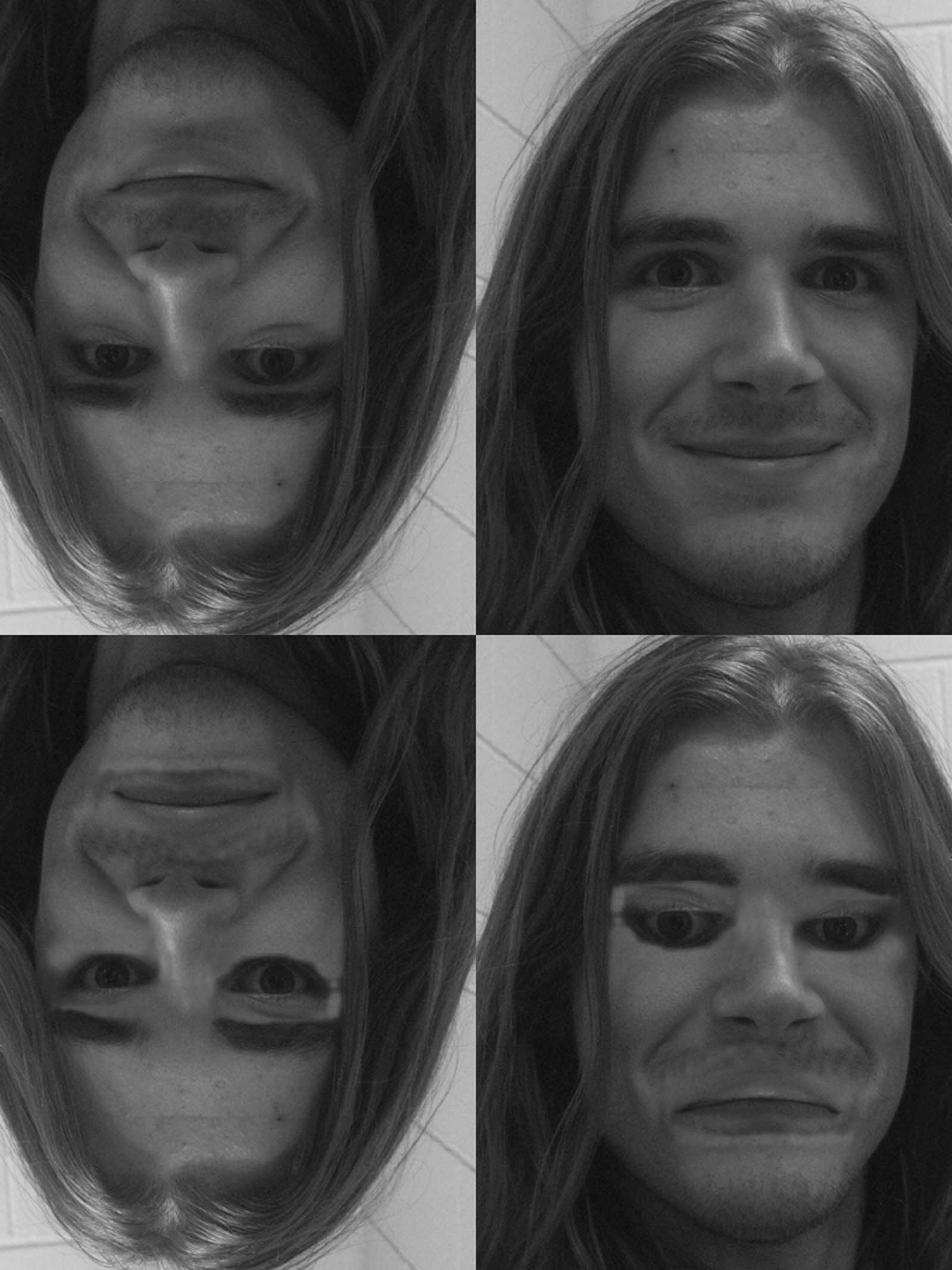
There is a dedicated region in the brain, known as the fusiform face area (or FFA), for the processing of faces. Brain imaging scans such as from fMRI detect increased activation in this area when faces are viewed. Brain damage to this area leads to a condition called prosopagnosia, or face blindness. People with prosopagnosia cannot recognize faces. In some cases, they can identify that the viewed object is a face, but they cannot identify to whom the face belongs. They cannot identify the faces of famous people, the faces of family and friends, or even their own face when looking at photographs. Prosopagnosia can be congenital with some people never able to identify faces, or it can be due to specific brain damage such as can occur through stroke.